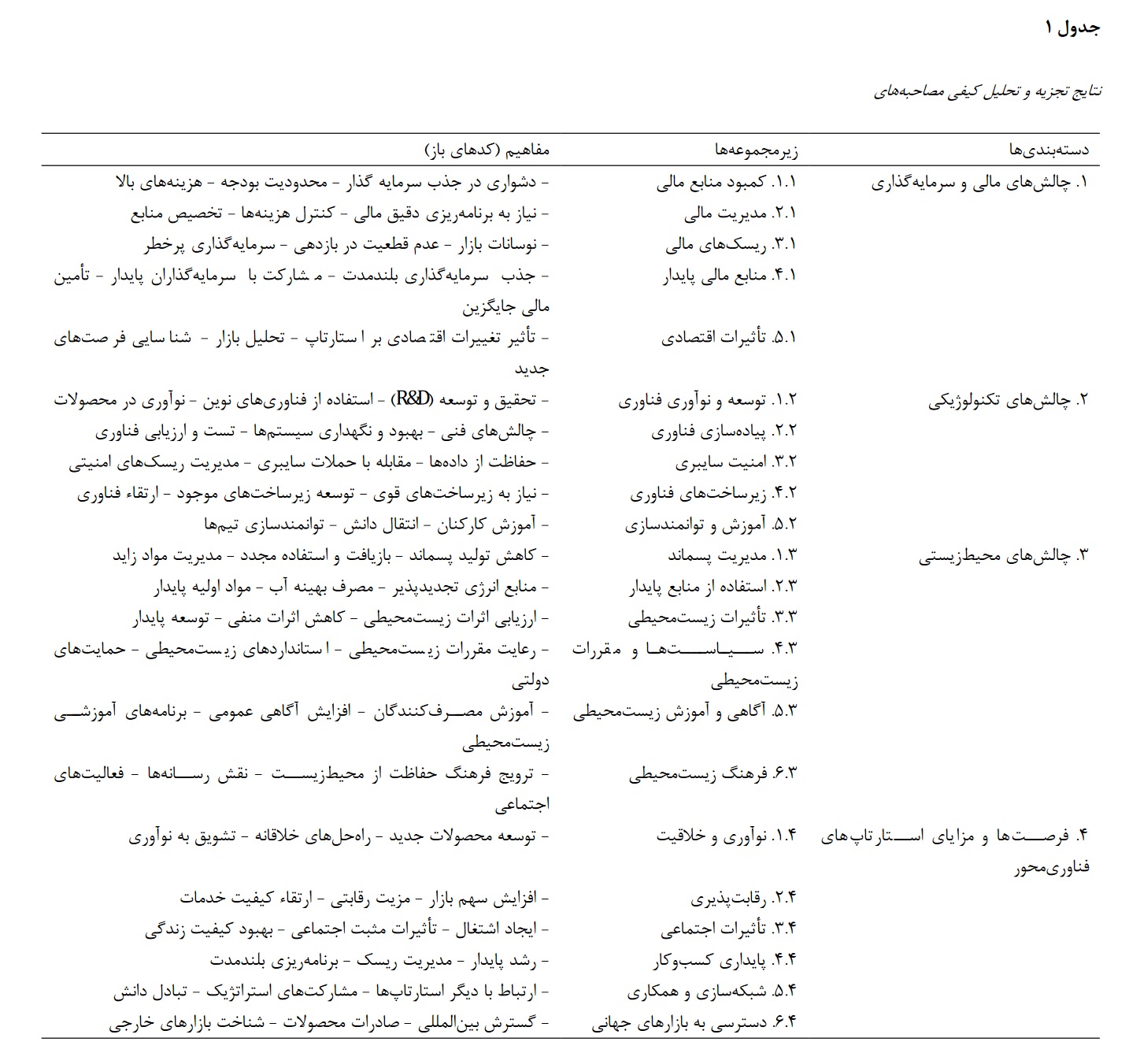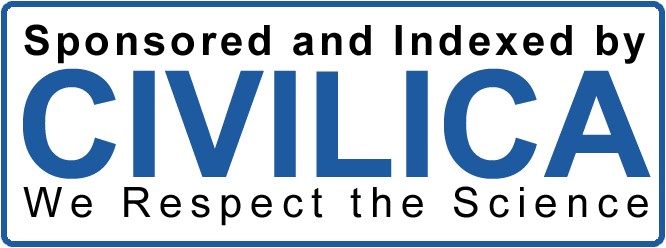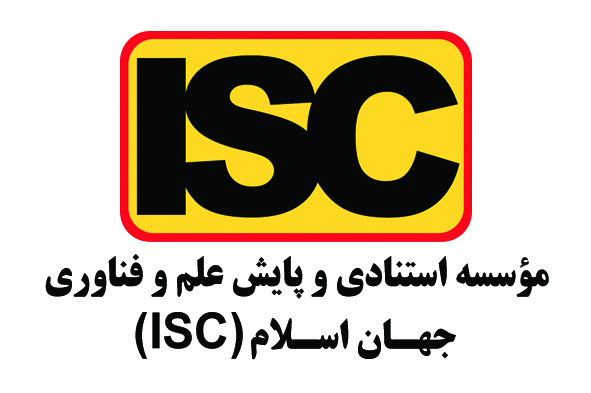A Comprehensive Framework for Analyzing Industry-University Collaboration
Keywords:
Industry-University Collaboration, Company-University Collaboration, Intellectual Property, Triple HelixAbstract
Collaboration between universities and industry means crossing legal, organizational, and other cultural boundaries between the two parties. Among the various forms of inter-organizational partnership, collaboration between universities and industry has been proposed as a potentially powerful option for stimulating technological advancements and innovation through increased knowledge flow across different industrial sectors and stimulating private sector investments in research and development. University-industry collaboration (UIC) can be considered a win-win technique that benefits both parties. Universities have recently experienced a decrease in public funding and an increase in competition from other research organizations. As a result, they have begun searching for new financial resources and have realized that collaboration with industries might be a suitable option to complement their research projects. On the other hand, industries have been forced to accelerate their innovation processes due to rapid technological development and globalization. The present study is applied and developmental with a descriptive approach that has been conducted in a systematic review of previous studies using Sandelowski and Barroso's six-stage method and library data analysis through meta-synthesis. In this research method, the findings of existing studies are examined using content analysis and open and axial coding techniques. In the current study, through the search process and analysis of articles, 67 articles were identified and analyzed from the WOS and SCOPUS databases. From the content analysis of the selected articles, 34 conceptual codes and 6 main categories were identified. The main identified categories include: collaboration objectives, intellectual property management, collaboration mechanisms, actors and stakeholders, barriers and challenges, success factors. Based on these dimensions, the collaboration between industry and university can be examined and analyzed. Numerous benefits can be seen in collaboration and interaction between universities and industries. University-industry collaboration allows companies to solve their problems, and on the other hand, provides universities with the opportunity to understand valuable experiences and real-world problems and access new research areas. Both universities and industries have high expectations from establishing this partnership and the results that may arise from this collaboration. Sharing knowledge and various resources and facilities in this collaboration process is proposed as a way to help companies become more competitive and to enhance education, innovation, and access to more sustainable resources for universities.
Downloads
References
Abreu, M., & Grinevich, V. (2013). The nature of academic entrepreneurship in the UK: Widening the focus on entrepreneurial
activities. Research Policy, 42(2), 408–422. https://doi.org/10.1016/j.respol.2012.10.005
Acworth, E. B. (2008). University-industry engagement: The formation of the Knowledge Integration Community (KIC) model
at the Cambridge-MIT Institute. Research Policy, 37(8), 1241–1254. https://doi.org/10.1016/j.respol.2008.04.022
Adler, C., & Lalonde, C. (2020). Identity, agency and institutional work in higher education: a qualitative meta-synthesis.
Qualitative Research in Organizations and Management: An International Journal, 15(2), 121–144.
https://doi.org/10.1108/QROM-11-2218-1696
Akiyama, T., & Furukawa, Y. (2009). Intellectual property rights and appropriability of innovation. Economics Letters, 103(3),
–141. https://doi.org/10.1016/j.econlet.2009.03.006
Alexy, O., George, G., & Salter, A. J. (2013). Cui Bono? The selective revealing of knowledge and its implications for
innovative activity. Academy of Management Review, 38(2), 270–291. https://doi.org/10.5465/amr.2011.0193
Algieri, B., Aquino, A., & Succurro, M. (2013). Technology transfer offices and academic spin-off creation: The case of Italy.
Journal of Technology Transfer, 38(4), 382–400. https://doi.org/10.1007/s10961-011-9241-8
Aliu, D., Akatay, A., & Aliu, A. (2018). The Influence of Inter-Stakeholders’ Communication on University – Industry
Collaboration. Scholedge International Journal of Business Policy & Governance ISSN 2394-3351, 4(8), 78.
https://doi.org/10.19085/journal.sijbpg040801
Al-Tabbaa, O., & Ankrah, S. (2016). Social capital to facilitate “engineered” university-industry collaboration for technology
transfer: A dynamic perspective. Technological Forecasting and Social Change, 104, 1–15.
https://doi.org/10.1016/j.techfore.2015.11.027
Al-Tabbaa, O., & Ankrah, S. (2019). ‘Engineered’ University-Industry Collaboration: A Social Capital Perspective. European
Management Review, 16(3), 543–565. https://doi.org/10.1111/emre.12174
Ankrah, S. N., & Al-Tabbaa, O. (2015). Universities-Industry Collaboration: A Systematic Review. SSRN Electronic Journal.
https://doi.org/10.2139/ssrn.2596018
Bäck, I., & Kohtamäki, M. (2015). Boundaries of R&D collaboration. Technovation, 45–46, 15–28.
https://doi.org/10.1016/j.technovation.2015.07.002
Barnes, T., Pashby, I., & Gibbons, A. (2002). Effective university - Industry interaction: A multi-case evaluation of
collaborative R&D projects. European Management Journal, 20(3), 272–285. https://doi.org/10.1016/S0263-
(02)00044-0
Bastos, E. C., Sengik, A. R., & Tello-Gamarra, J. (2021). Fifty years of University-industry collaboration: A global
bibliometrics overview. Science and Public Policy, 48(2), 177–199. https://doi.org/10.1093/scipol/scaa077
Baycan, T., & Stough, R. R. (2013). Bridging knowledge to commercialization: The good, the bad, and the challenging. Annals
of Regional Science, 50(2), 367–405. https://doi.org/10.1007/s00168-012-0510-8
Belderbos, R., Cassiman, B., Faems, D., Leten, B., & Van Looy, B. (2014). Co-ownership of intellectual property: Exploring
the value-appropriation and value-creation implications of co-patenting with different partners. Research Policy, 43(5),
–852. https://doi.org/10.1016/j.respol.2013.08.013
Bercovitz, J. E. L., & Tyler, B. B. (2014). Who i am and how i contract: The effect of contractors’ roles on the evolution of
contract structure in university-industry research agreements. Organization Science, 25(6), 1840–1859.
https://doi.org/10.1287/orsc.2014.0917
Bercovitz, J., & Feldman, M. (2011). The mechanisms of collaboration in inventive teams: Composition, social networks, and
geography. Research Policy, 40(1), 81–93. https://doi.org/10.1016/j.respol.2010.09.008
Bruneel, J., D’Este, P., & Salter, A. (2010). Investigating the factors that diminish the barriers to university-industry
collaboration. Research Policy, 39(7), 858–868. https://doi.org/10.1016/j.respol.2010.03.006
Bstieler, L., & Hemmert, M. (2015). The effectiveness of relational and contractual governance in new product development
collaborations: Evidence from Korea. Technovation, 45–46, 29–39. https://doi.org/10.1016/j.technovation.2015.07.003
Burnett, S., & Williams, D. (2014). The role of knowledge transfer in technological innovation: An oil and gas industry
perspective. Knowledge Management Research and Practice, 12(2), 133–144. https://doi.org/10.1057/kmrp.2012.48
Chai, S., & Shih, W. (2016). Bridging science and technology through academic-industry partnerships. Research Policy, 45(1),
–158. https://doi.org/10.1016/j.respol.2015.07.007
Chen, Y., & Puttitanun, T. (2005). Intellectual property rights and innovation in developing countries. Journal of Development
Economics, 78(2), 474–493. https://doi.org/10.1016/j.jdeveco.2004.11.005
Chesbrough, H. (2006). Open Business Models. In Harvard Business School Press. https://doi.org/10.1007/978-3-319-15347-
_301146
Confraria, H., & Vargas, F. (2019). Scientific systems in Latin America: performance, networks, and collaborations with
industry. Journal of Technology Transfer, 44(3), 874–915. https://doi.org/10.1007/s10961-017-9631-7
Costa, P. L., Ferreira, J. J., & Torres de Oliveira, R. (2023). From entrepreneurial failure to re-entry. Journal of Business
Research, 158, 113699. https://doi.org/10.1016/j.jbusres.2023.113699
Ćudić, B., Alešnik, P., & Hazemali, D. (2022). Factors impacting university–industry collaboration in European countries.
Journal of Innovation and Entrepreneurship, 11(1). https://doi.org/10.1186/s13731-022-00226-3
Czarnitzki, D., Hussinger, K., & Schneider, C. (2011). The Nexus between Science and Industry: Evidence from Faculty
Inventions. SSRN Electronic Journal. https://doi.org/10.2139/ssrn.1538112
Davey, T., Galan Muros, V., Baaken, T., & Meerman, A. (2011). The State of European University Business Cooperation. Part
of the DG Education and Culture Study on the Cooperation between Higher Education Institutions and Public and
Private Organisations in Europe. 140.
Davey, T., Rossano, S., & van der Sijde, P. (2016). Does context matter in academic entrepreneurship? The role of barriers and
drivers in the regional and national context. Journal of Technology Transfer, 41(6), 1457–1482.
https://doi.org/10.1007/s10961-015-9450-7
Dollinger, M., Coates, H., Bexley, E., Croucher, G., & Naylor, R. (2018). Framing international approaches to university–
industry collaboration. Policy Reviews in Higher Education, 2(1), 105–127.
https://doi.org/10.1080/23322969.2018.1424560
Du, J., Leten, B., & Vanhaverbeke, W. (2014). Managing open innovation projects with science-based and market-based
partners. Research Policy, 43(5), 828–840. https://doi.org/10.1016/j.respol.2013.12.008
El-Ferik, S., & Al-Naser, M. (2021). University Industry Collaboration: A Promising Trilateral Co-Innovation Approach. IEEE
Access, 9, 112761–112769. https://doi.org/10.1109/ACCESS.2021.3104096
Etzkowitz, H. (1998). The norms of entrepreneurial science: Cognitive effects of the new university-industry linkages.
Research Policy, 27(8), 823–833. https://doi.org/10.1016/S0048-7333(98)00093-6
Etzkowitz, H. (2003). Innovation in innovation: The Triple Helix of university-industry-government relations. Social Science
Information, 42(3), 293–337. https://doi.org/10.1177/05390184030423002
Etzkowitz, H., & Leydesdorff, L. (2000). The dynamics of innovation: From National Systems and “mode 2” to a Triple Helix
of university-industry-government relations. Research Policy, 29(2), 109–123. https://doi.org/10.1016/S0048-
(99)00055-4
Fagerberg, J., Srholec, M., & Verspagen, B. (2010). Innovation and Economic Development. In Innovation and Economic
Development. https://doi.org/10.4337/9781849806558
Fernandes, G., Santos, J. M. R. C. A., Ribeiro, P., Ferreira, L. M. D. F., O’Sullivan, D., Barroso, D., & Pinto, E. B. (2023).
Critical success factors of university-industry R&D collaborations. Procedia Computer Science, 219, 1650–1659.
https://doi.org/10.1016/j.procs.2023.01.458
Fernández-Esquinas, M., Pinto, H., Yruela, M. P., & Pereira, T. S. (2016). Tracing the flows of knowledge transfer: Latent
dimensions and determinants of university–industry interactions in peripheral innovation systems. Technological
Forecasting and Social Change, 113, 266–279. https://doi.org/10.1016/j.techfore.2015.07.013
Finfgeld-Connett, D. (2018). A Guide to Qualitative Meta-synthesis (1st ed.).
https://doi.org/https://doi.org/10.4324/9781351212793
Fischer, B. B., Schaeffer, P. R., Vonortas, N. S., & Queiroz, S. (2018). Quality comes first: university-industry collaboration
as a source of academic entrepreneurship in a developing country. Journal of Technology Transfer, 43(2), 263–284.
https://doi.org/10.1007/s10961-017-9568-x
Fortune, J., & White, D. (2006). Framing of project critical success factors by a systems model. International Journal of Project
Management, 24(1), 53–65. https://doi.org/10.1016/j.ijproman.2005.07.004
Fu, X., & Yang, Q. G. (2009). Exploring the cross-country gap in patenting: A Stochastic Frontier Approach. Research Policy,
(7), 1203–1213. https://doi.org/10.1016/j.respol.2009.05.005
Galan-Muros, V., & Davey, T. (2019). The UBC ecosystem: putting together a comprehensive framework for universitybusiness cooperation. Journal of Technology Transfer, 44(4), 1311–1346. https://doi.org/10.1007/s10961-017-9562-3
Geuna, A., Steinmeuller, W., & Salter, A. J. (2003). Science and Innovation: Changing Rationales for the Public Funding of
Research.
Göksidan, H. T., Erdil, E., & Çakmur, B. (2018). Catching-up and the Role of University-Industry Collaboration in Emerging
Economies: Case of Turkey. Innovation and the Entrepreneurial University, 83–113. https://doi.org/10.1007/978-3-319-
-9_5
Gonzzlez-LLpez, M., Dileo, I., & Losurdo, F. (2015). University-Industry Collaboration in the European Regional Context:
The Cases of Galicia and Apulia Region. SSRN Electronic Journal. https://doi.org/10.2139/ssrn.2578691
Granstrand, O., & Holgersson, M. (2014). The Challenge of Closing Open Innovation. Research Technology Management,
(5), 19–25.
Gretsch, O., Tietze, F., & Kock, A. (2020). Firms’ intellectual property ownership aggressiveness in university–industry
collaboration projects: Choosing the right governance mode. Creativity and Innovation Management, 29(2), 359–370.
https://doi.org/10.1111/caim.12354
Gumusay, A. A., & Bohne, T. M. (2018). Individual and organizational inhibitors to the development of entrepreneurial
competencies in universities. Research Policy, 47(2), 363–378.
Hall H., B., Link N., A., & Scott T., J. (2001). Barriers Inhibiting Industry from Partnering with Universities: Evidence from
the Advanced Technology Program. Journal of Technology Transfer, 26(1–2), 87.
Hertzfeld, H. R., Link, A. N., & Vonortas, N. S. (2006). Intellectual property protection mechanisms in research partnerships.
Research Policy, 35(6), 825–838. https://doi.org/10.1016/j.respol.2006.04.006
Hewitt-Dundas, N., Gkypali, A., & Roper, S. (2019). Does learning from prior collaboration help firms to overcome the ‘twoworlds’ paradox in university-business collaboration? Research Policy, 48(5), 1310–1322.
https://doi.org/10.1016/j.respol.2019.01.016
Hoon, C. (2013). Meta-Synthesis of Qualitative Case Studies An Approach to Theory Building. Organizational Research
Methods, 16, 522–556. https://doi.org/10.1177/1094428113484969
Huang, M. H., & Chen, D. Z. (2017). How can academic innovation performance in university–industry collaboration be
improved? Technological Forecasting and Social Change, 123, 210–215. https://doi.org/10.1016/j.techfore.2016.03.024
Isaeva, I., Steinmo, M., & Rasmussen, E. (2022). How firms use coordination activities in university–industry collaboration:
adjusting to or steering a research center? Journal of Technology Transfer, 47(5), 1308–1342.
https://doi.org/10.1007/s10961-021-09886-x
Kamuriwo, D. S., Baden-Fuller, C., & Zhang, J. (2017). Knowledge Development Approaches and Breakthrough Innovations
in Technology-Based New Firms. Journal of Product Innovation Management, 34(4), 492–508.
https://doi.org/10.1111/jpim.12393
Lee, K. J. (2011). From interpersonal networks to inter-organizational alliances for university-industry collaborations in Japan:
The case of the Tokyo Institute of Technology. R and D Management, 41(2), 190–201. https://doi.org/10.1111/j.1467-
2011.00633.x
Lee, K. J. (2014). Development of boundary-spanning organisations in Japanese universities for different types of university–
industry collaborations: a resource dependence perspective. Asian Journal of Technology Innovation, 22(2), 204–218.
https://doi.org/10.1080/19761597.2014.973164
Leydesdorff Loet, & Etzkowitz Henry. (1998). Triple Helix of innovation: Introduction. Science and Public Policy, 25(6).
Lopes, J., & Lussuamo, J. (2021). Barriers to University-Industry Cooperation in a Developing Region. Journal of the
Knowledge Economy, 12(3), 1019–1035. https://doi.org/10.1007/s13132-020-00646-0
Marge, S., & Alo, L. (2012). Indicators Measuring University-Industry Cooperation. Discussions on Estonian Economic Policy,
(1), 204–225.
Mascarenhas, C., Ferreira, J. J., & Marques, C. (2018). University-industry cooperation: A systematic literature review and
research agenda. Science and Public Policy, 45(5), 708–718. https://doi.org/10.1093/SCIPOL/SCY003
Meerman, A., Davey, T., De Cleyn, S. H., & Galan Muros, V. (2013). The state of university-business cooperation in Belgium:
part of the DG Education and Culture study on the cooperation between higher education institutions and public and
private organisations in Europe.
Minguillo, D., & Thelwall, M. (2015). Research excellence and university-industry collaboration in UK science parks.
Research Evaluation, 24(2), 181–196. https://doi.org/10.1093/reseval/rvu032
Mora-Valentin, E. M., Montoro-Sanchez, A., & Guerras-Martin, L. A. (2004). Determining factors in the success of R&D
cooperative agreements between firms and research organizations. Research Policy, 33(1), 17–40.
https://doi.org/10.1016/S0048-7333(03)00087-8
Muscio, A., & Vallanti, G. (2014). Perceived Obstacles to University–Industry Collaboration: Results from a Qualitative
Survey of Italian Academic Departments. Industry and Innovation, 21(5), 410–429.
https://doi.org/10.1080/13662716.2014.969935
Nishimura, J., & Okamuro, H. (2018). Internal and external discipline: The effect of project leadership and government
monitoring on the performance of publicly funded R&D consortia. Research Policy, 47(5), 840–853.
https://doi.org/10.1016/j.respol.2018.02.007
Nsanzumuhire, S. U., & Groot, W. (2020). Context perspective on University-Industry Collaboration processes: A systematic
review of literature. Journal of Cleaner Production, 258. https://doi.org/10.1016/j.jclepro.2020.120861
O’Dwyer, M., Filieri, R., & O’Malley, L. (2023). Establishing successful university–industry collaborations: barriers and
enablers deconstructed. Journal of Technology Transfer, 48(3), 900–931. https://doi.org/10.1007/s10961-022-09932-2
O’Kane, C., Mangematin, V., Geoghegan, W., & Fitzgerald, C. (2015). University technology transfer offices: The search for
identity to build legitimacy. Research Policy, 44(2), 421–437. https://doi.org/10.1016/j.respol.2014.08.003
Pinto, J. K., & Pinto, M. B. (2021). Critical Success Factors in Collaborative R&D Projects BT - Managing Collaborative
R&D Projects: Leveraging Open Innovation Knowledge-Flows for Co-Creation. 253–270.
Polt, W., Rammer, C., Gassler, H., Schibany, A., & Schartinger, D. (2001). Benchmarking industry-science relations: The role
of framework conditions. Science and Public Policy, 28(4), 247–258. https://doi.org/10.3152/147154301781781453
Pujotomo, D., Syed Hassan, S. A. H., Ma’aram, A., & Sutopo, W. (2023). University–industry collaboration in the technology
development and technology commercialization stage: a systematic literature review. Journal of Applied Research in
Higher Education, 15(5), 1276–1306. https://doi.org/10.1108/JARHE-11-2222-0344
Rajalo, S., & Vadi, M. (2017). University-industry innovation collaboration: Reconceptualization. Technovation, 62–63, 42–
https://doi.org/10.1016/j.technovation.2017.04.003
Rossoni, A. L., de Vasconcellos, E. P. G., & de Castilho Rossoni, R. L. (2023). Barriers and facilitators of university-industry
collaboration for research, development and innovation: a systematic review. Management Review Quarterly.
https://doi.org/10.1007/s11301-023-00349-1
Rothaermel, F. T., & Thursby, M. (2005). Incubator firm failure or graduation?: The role of university linkages. Research
Policy, 34(7), 1076–1090. https://doi.org/10.1016/j.respol.2005.05.012
Sandelowski, M., & Barroso, J. (2007). Handbook for Synthesizing Qualitative Research. In Springer Publishing Company.
https://doi.org/10.3928/00220124-20080101-07
Sarkar, S., & Mateus, S. (2022). Value creation using minimal resources – A meta-synthesis of frugal innovation. Technological
Forecasting and Social Change, 179. https://doi.org/10.1016/j.techfore.2022.121612
Scazziota, V., Serra, F., Sarkar, S., & Guerrazzi, L. (2023). The antecedents of entrepreneurial action: A meta-synthesis on
effectuation and bricolage. Journal of Business Research, 155. https://doi.org/10.1016/j.jbusres.2022.113411
Schartinger, D., Rammer, C., & Fröhlich, J. (2006). Knowledge interactions between universities and industry in Austria:
Sectoral patterns and determinants. Innovation, Networks, and Knowledge Spillovers: Selected Essays, 135–166.
https://doi.org/10.1007/3-540-35981-8_7
Siegel, D. S., Waldman, D. A., Atwater, L. E., & Link, A. N. (2003). Commercial knowledge transfers from universities to
firms: Improving the effectiveness of university-industry collaboration. Journal of High Technology Management
Research, 14(1), 111–133. https://doi.org/10.1016/S1047-8310(03)00007-5
Sjöö, K., & Hellström, T. (2019). University–industry collaboration: A literature review and synthesis. Industry and Higher
Education, 33(4), 275–285. https://doi.org/10.1177/0950422219829697
S.N. Ankrah, T.F. Burgess, P. Grimshaw, & N.E. Shaw. (2013). Asking Both University and Industry Actors about their
Engagement in Knowledge Transfer: What Single-group Studies of Motives Omit. Technovation, 33, 50–65.
Spender, J. C., Corvello, V., Grimaldi, M., & Rippa, P. (2017). Startups and open innovation: a review of the literature.
European Journal of Innovation Management, 20(1), 4–30. https://doi.org/10.1108/EJIM-12-2015-0131
T. Mgonja, C. (2017). Enhancing the University - Industry Collaboration in Developing Countries through Best Practices.
International Journal of Engineering Trends and Technology, 50(4), 216–225. https://doi.org/10.14445/22315381/ijettv50p235
Terán-Bustamante, A., Martínez-Velasco, A., & López-Fernández, A. M. (2021). University–industry collaboration: A
sustainable technology transfer model. Administrative Sciences, 11(4). https://doi.org/10.3390/admsci11040142
Togoontumur, T., & Cooray, N. S. (2023). Does Collaboration Matter: The Effect of University-industry R&D Collaboration
On Economic Growth. Journal of the Knowledge Economy. https://doi.org/10.1007/s13132-023-01469-5
Tseng, F. C., Huang, M. H., & Chen, D. Z. (2020). Factors of university–industry collaboration affecting university innovation
performance. Journal of Technology Transfer, 45(2), 560–577. https://doi.org/10.1007/s10961-018-9656-6
Valentín, E. M. M. (2000). University—Industry Cooperation: A Framework of Benefits and Obstacles. Industry and Higher
Education, 14(3), 165–172. https://doi.org/10.5367/000000000101295011
Vega-Jurado, J., Fernández-De-Lucio, I., & Huanca, R. (2008). University-industry relations in Bolivia: Implications for
university transformations in Latin America. Higher Education, 56(2), 205–220. https://doi.org/10.1007/s10734-007-
-9
Vick, T. E., & Robertson, M. (2018). A systematic literature review of UK university- industry collaboration for knowledge
transfer: A future research agenda. Science and Public Policy, 45(4), 579–590. https://doi.org/10.1093/SCIPOL/SCX086
Villani, E., Rasmussen, E., & Grimaldi, R. (2017). How intermediary organizations facilitate university–industry technology
transfer: A proximity approach. Technological Forecasting and Social Change, 114, 86–102.
https://doi.org/10.1016/j.techfore.2016.06.004
Walter, S. G., Walter, A., & Müller, D. (2015). Formalization, Communication Quality, and Opportunistic Behavior in R&D
Alliances between Competitors. Journal of Product Innovation Management, 32(6), 954–970.
https://doi.org/10.1111/jpim.12209
Zaharia, N., & Kaburakis, A. (2016). Bridging the gap: U.S. sport managers on barriers to industry-academia research
collaboration. Journal of Sport Management, 30(3), 248–264. https://doi.org/10.1123/jsm.2015-0010
Zawislak, P. A., & Dalmarco, G. (2011). The silent run: New issues and outcomes for University-industry relations in Brazil.
Journal of Technology Management and Innovation, 6(2), 66–82. https://doi.org/10.4067/S0718-27242011000200005
Zhou, P., Tijssen, R., & Leydesdorff, L. (2016). University-industry collaboration in China and the USA: A bibliometric
comparison. PLoS ONE, 11(11). https://doi.org/10.1371/journal.pone.0165277
Zimmer, L. (2006). Qualitative meta-synthesis: A question of dialoguing with texts. In Journal of Advanced Nursing (Vol. 53,

Downloads
Published
Issue
Section
License

This work is licensed under a Creative Commons Attribution-NonCommercial 4.0 International License.










